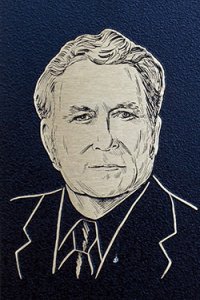
Distinguished Engineer
Hometown: Webster
Engineering Physics,
Charles A. Lundquist earned a Ph.D. in physics from the University of Kansas in 1954 following his graduation from South Dakota State College. He began his scientific career in 1953 as assistant professor of engineering research at Pennsylvania State University and worked as a physicist with the Technical Feasibility Study Office for two years. He later joined the Research Projects Office of the Army Ballistic Missile Agency and made significant contributions to the early explorer satellites. In 1962, he became assistant director for science at the Smithsonian Astrophysical Observatory, Cambridge, Massachusetts. While in this position, he was co-editor of the first Smithsonian Standard Earth and played an active role in the telescope (ultra-violet astronomy) project of the first successful Orbiting Astronomical Observatory. During the Apollo Program, he was a member of the NASA-sponsored Group for Lunar Exploration Planning. In 1973, Lundquist rejoined NASA’s George C. Marshall Space Flight Center as Director of the Space Sciences Laboratory. Lundquist directed the laboratory in key roles in such projects as the High Energy Astrophysical Observatory (HEAO), the 1.2 meter X-Ray Telescope and studies of a Solar-Terrestrial Observatory.

